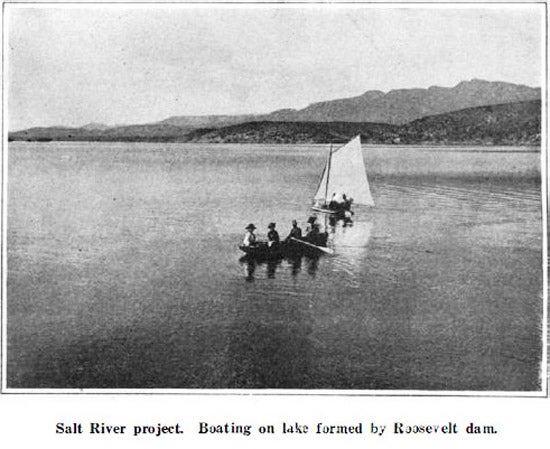This article was published in Scientific American’s former blog network and reflects the views of the author, not necessarily those of Scientific American
This month marks the 100th anniversary of the completion of the Roosevelt Dam in Arizona. It was a major part of the Salt River project, which aimed to create hydroelectric power from the Salt River and make its surrounding lands cultivable. The dam was an engineering marvel and was built as part of the Reclamation Act passed in 1902, which sought to irrigate arid lands in the United States—about one-third of the country’s land at the time. It also attempted to attract settlers in order to set up permanent communities.
.JPG?w=550)
On supporting science journalism
If you're enjoying this article, consider supporting our award-winning journalism by subscribing. By purchasing a subscription you are helping to ensure the future of impactful stories about the discoveries and ideas shaping our world today.
The Roosevelt Dam, among other projects set up by the Reclamation Act, was featured in the August 12, 1911 issue of Scientific American. “On the Salt River project the power developed at the storage dam is converted into high-voltage electric current, and transmitted to the valley, where the fertile land greatly exceeds the water supply, and the latter is increased by pumping from a large number of wells distributed throughout the region where ground water is known to exist.” Around 40,000 acres of arid land were able to be cultivated, leading to the rise of cities and towns like Phoenix—now the country’s fifth-largest city.
.JPG?w=500)
It took over 350,00 cubic yards of masonry to build the dam and required nearly $300,000 to build roads accessing the area, as many of the preexisting roads were dug out to make the reservoir. The dam and the artificial reservoir (also named after President Theodore Roosevelt) were the largest in the world at the time they were built.

Events are being held this weekend at the Roosevelt Dam to commemorate its 100th year anniversary, including opening a time capsule placed at the dam in 1961 and replacing it with a time capsule from this year…maybe this blog post will make it in?